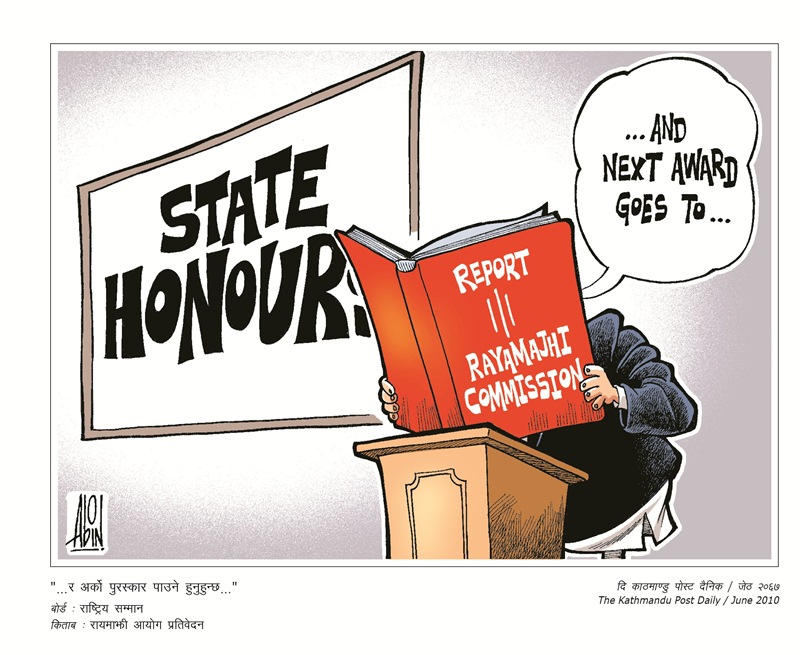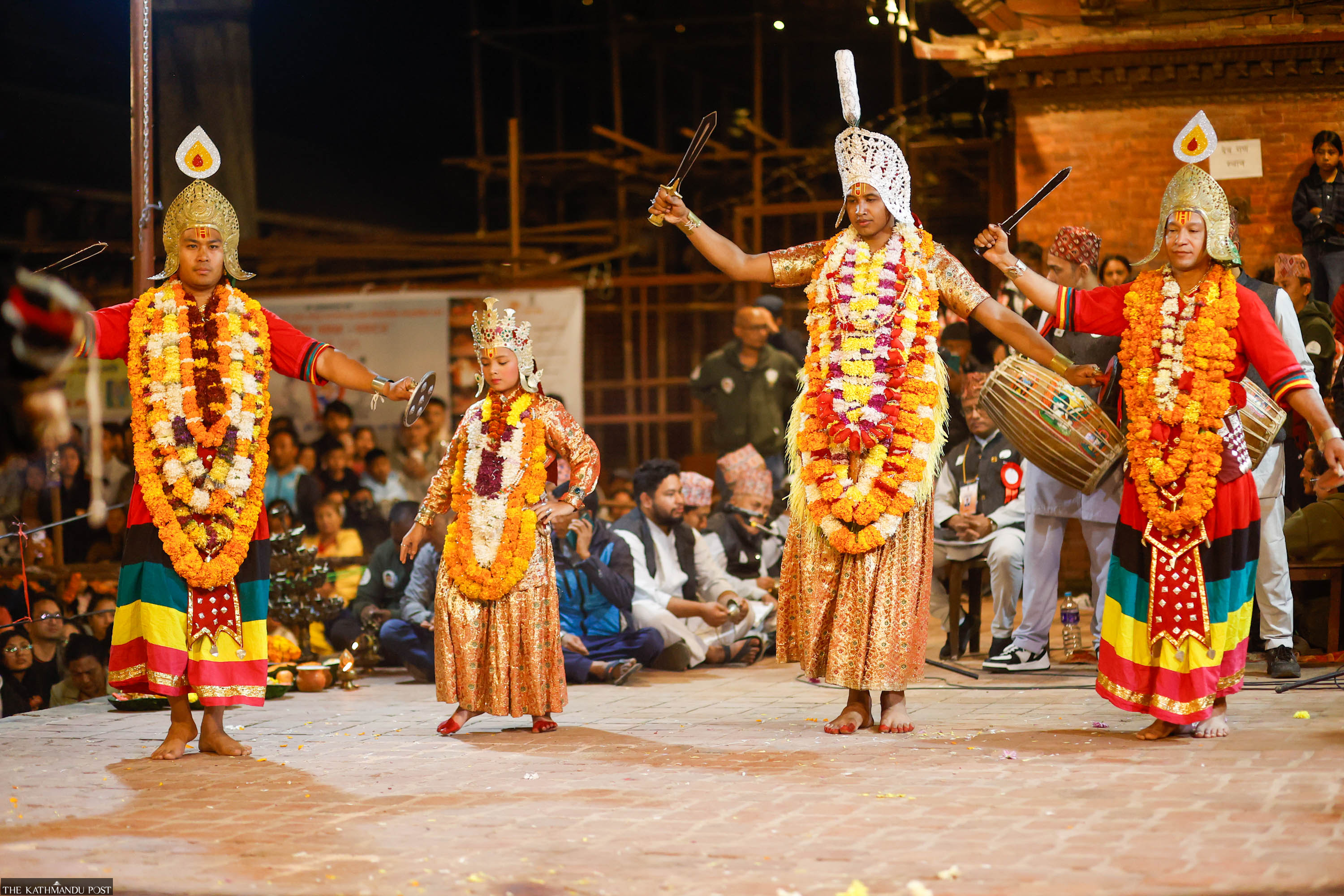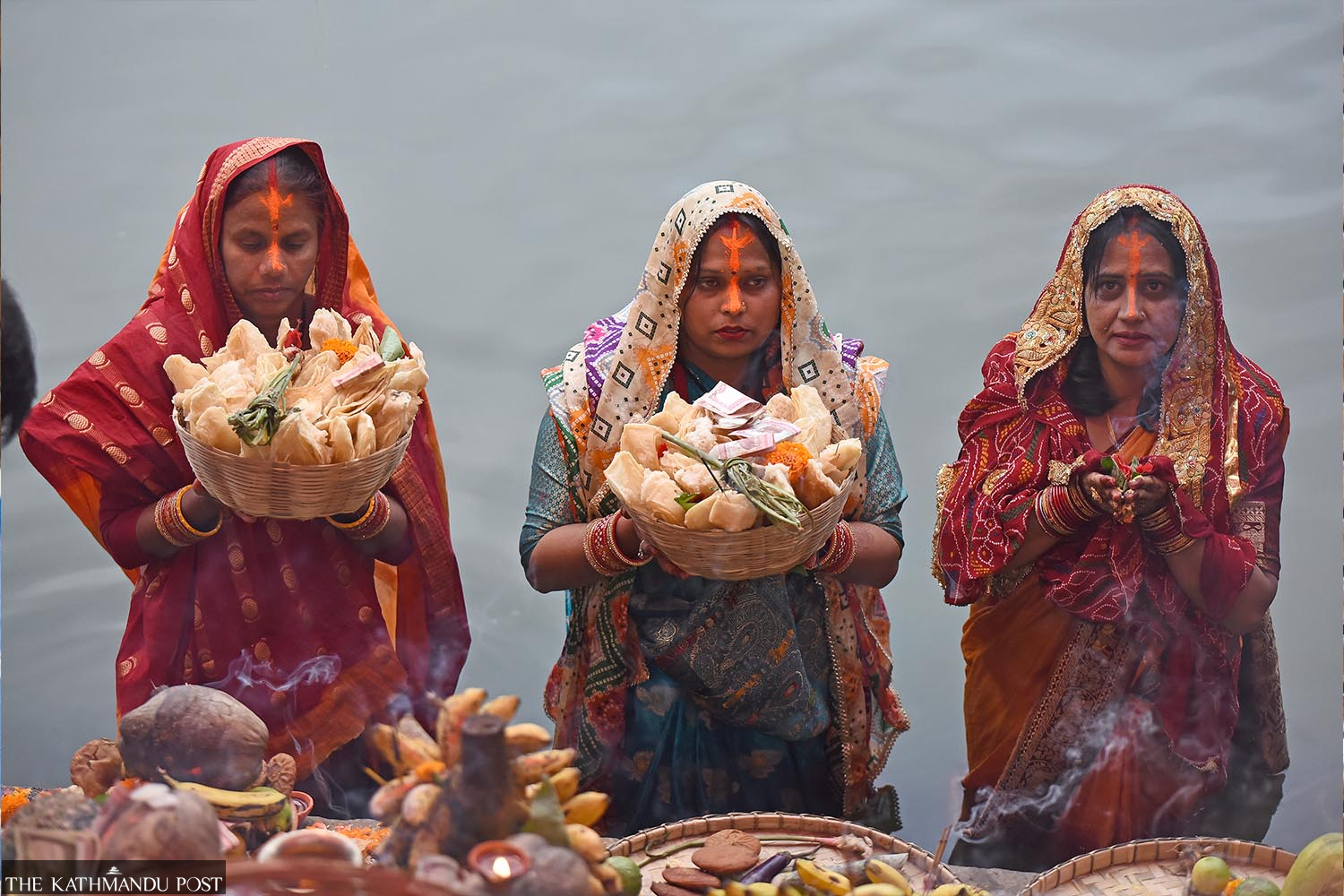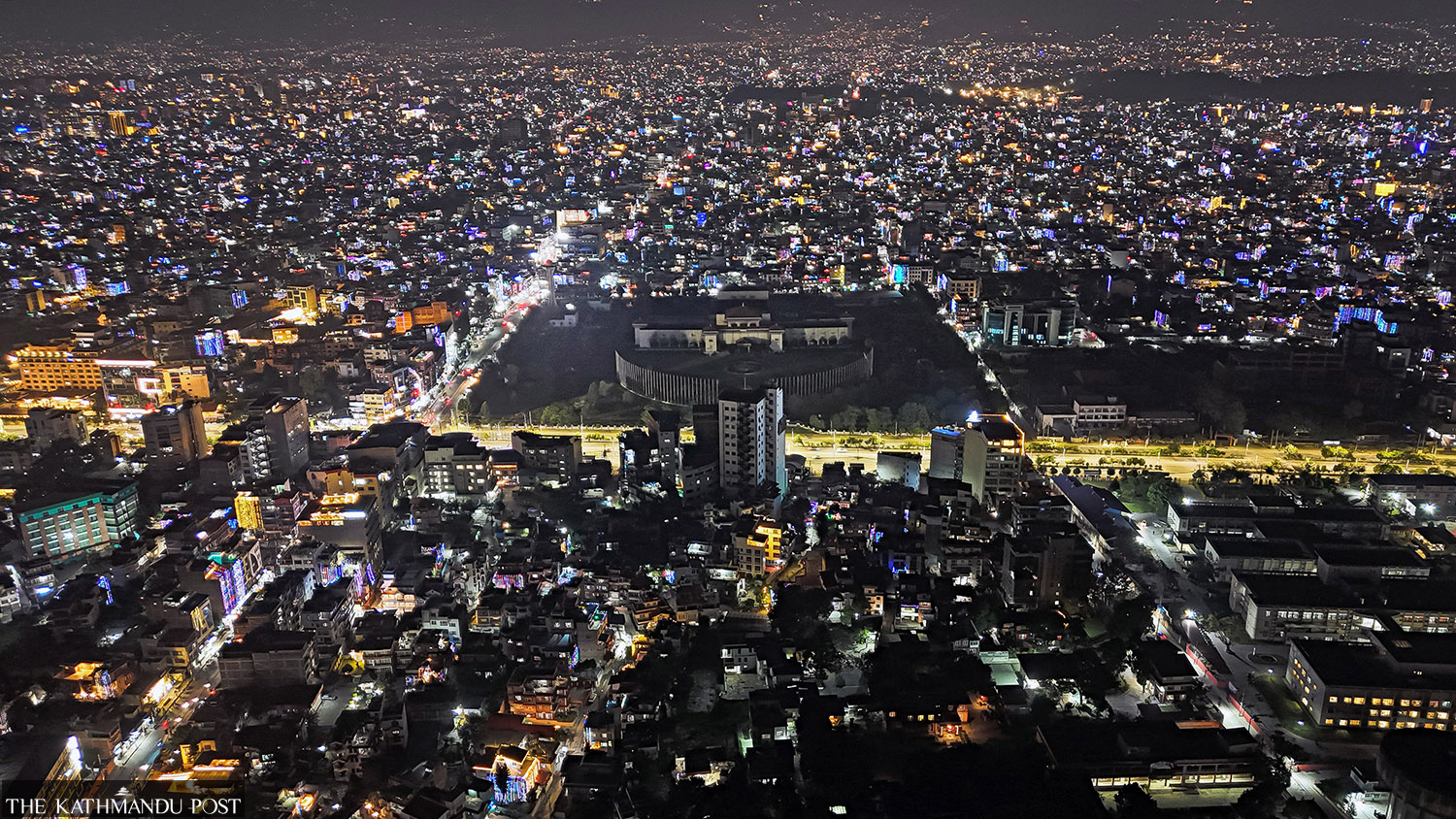Visual Stories
Cartoons worth a thousand words
Renowned cartoonist Abin Shrestha has spent 26 years sketching pithy pictures to shine a light on society, and now they’re collated.
Ankit Khadgi
Twenty-six years ago, when the editor of Nepal Times asked Abin Shrestha to describe what cartoons are really about, he was lost for words. Having just had his cartoons published by Gorkhapatra, and buoyed by his family and friend’s support, that was during a job interview. Shrestha can’t recall what words he uttered, but they must have worked.
“For me, then, the sole purpose of joining the paper was to make a career out of drawing cartoons. I had not given much thought to what it meant to me or how valuable it would be to me one day,” says Shrestha, who has been working with Kantipur Media Group for the past 10 years.
Today, with almost three decades of experience, the answers are far clearer for Shrestha. “ It’s the medium through which I express the ills of our society. They have the power to change social structure and function. If used responsibly, the cartoons are worth a thousand words,” he adds.
From simply being a means to make a living, his cartoons have become a symbol of something powerful: a medium to depicting everyday humanity, or lack of, as a tool for social transformation.
And while depicting complex issues with limited space is challenging creatively, it’s a form of pressure he thrives on. “Even if I finish a cartoon much before the paper goes to print, I like working on it for the entire day to ensure it has all the necessary elements, which will help the audience understand the issue better,” says Shrestha.
From social to political issues, Shrestha’s cartoons--satirical and humorous--have sparked conversation and curiosity. “When you make a cartoon on social and political misconduct, you are contributing to making people aware of such issues. The cartoons are a medium calling for a positive change to take place,” says Shrestha. “To tell a story through the form of a cartoon requires a subject that affects a larger part of our society.”
And those subjects are always broad-brushed, with themes affecting people in different ways. So, while being limited to a standard space and word count sound like it could choke his creativity, it drives him to package his thoughts into the tightest form while delivering the most impact possible.
Collecting all of his important cartoons on political issues, from the aftermath of People’s Movement II to the contemporary government, Shrestha released the second volume of his book, ‘Best of Abin’, on Thursday in the Capital.
“We don’t really have a culture of preserving cartoons in the form of books. That’s why I initiated the publishing of a book based on the collection of my artworks, so that people could get a glimpse of Nepal’s history following the 2005 People Movement--through the cartoons,” says Shrestha.
.jpg)
.jpg)
.jpg)
.jpg)



.jpg)
.jpg)










 15.12°C Kathmandu
15.12°C Kathmandu





